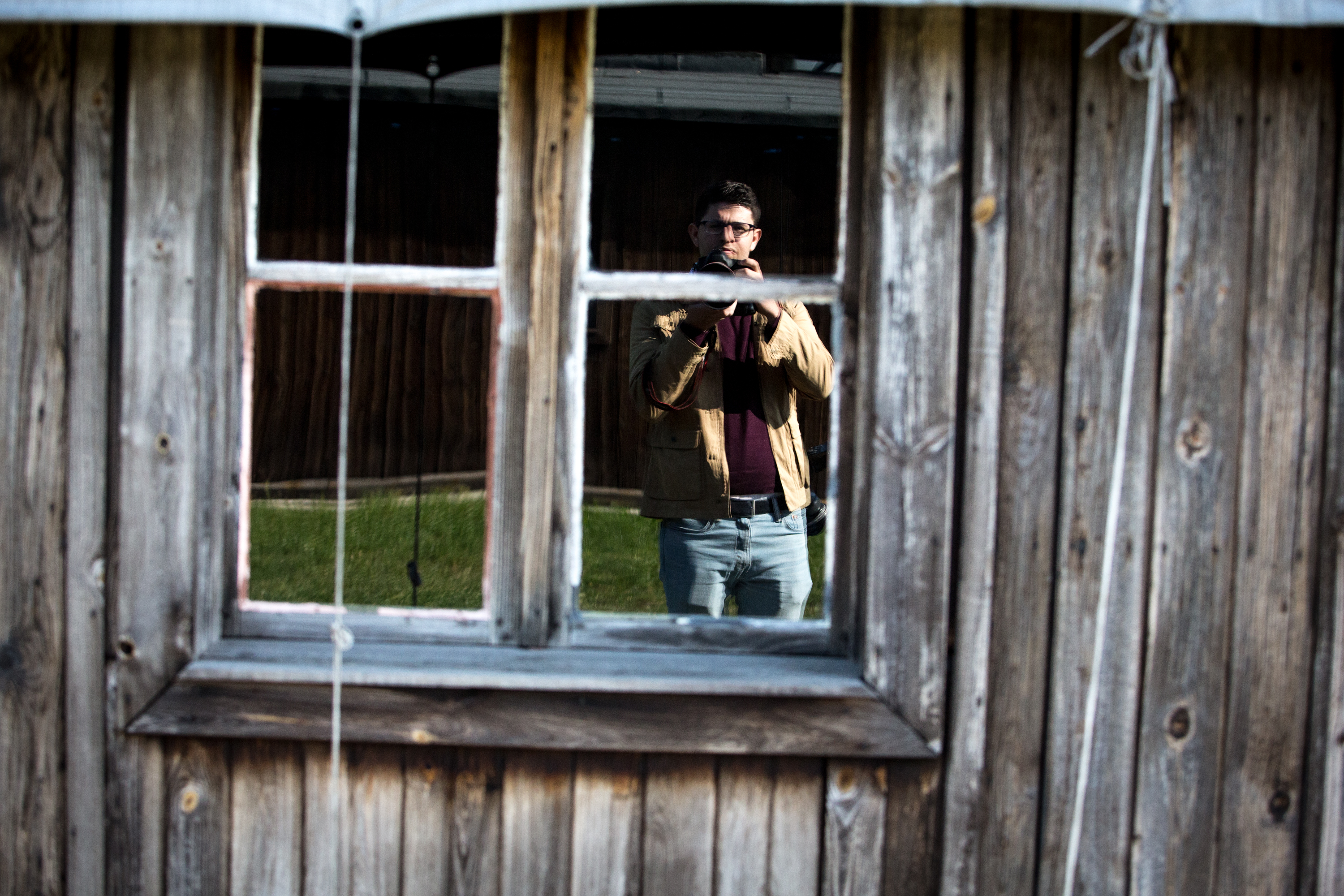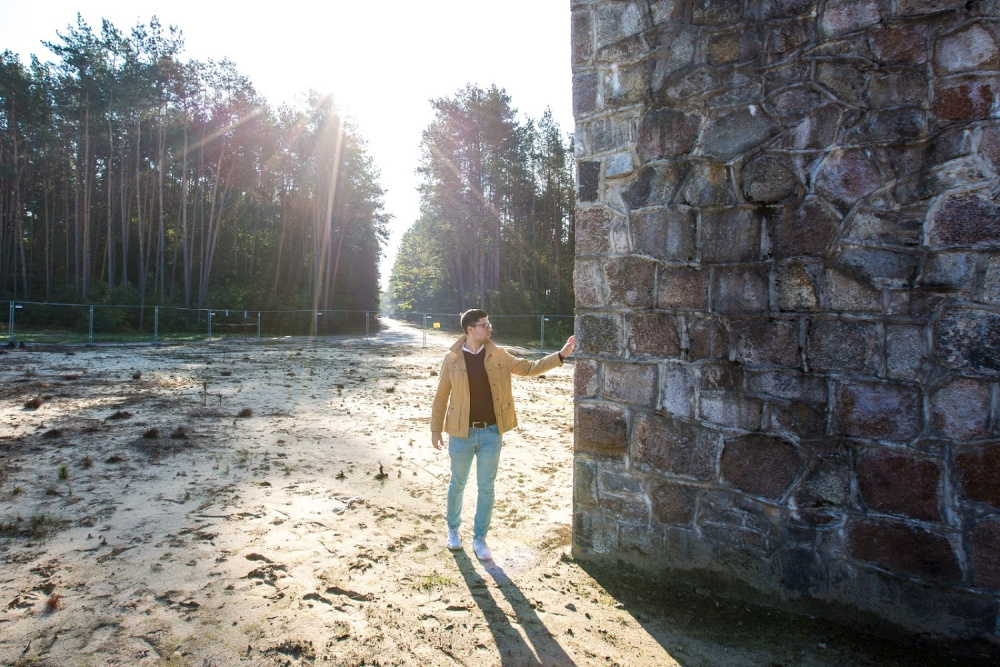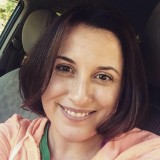On Monday, Aug. 5, a group of undergraduate students from “Together, Restoring Their Names” will tour the new Auschwitz exhibition at the Museum of Jewish Heritage in New York City. This exhibition gathers more than 700 original objects and 400 photographs from over 20 institutions and museums around the world. It’s the most comprehensive exhibition dedicated to the history of Auschwitz and its role in the Holocaust presented in North America.
Part of CJP’s IACT initiative, the program enables undergraduates, both Jews and non-Jews, to learn about Jewish life in Europe before, during and after the Holocaust through a variety of travel programs. Director Elan Kawesch recently discussed the program and his goals for the August trip.
Tell us about “Together, Restoring Their Names” and what you do.
For a little bit of background, I’m a rising senior at Brandeis University. I grew up in Brookline, so the Boston Jewish community is something that I’ve always been involved in. When I started working for CJP’s IACT initiative, which connects students with Israel travel opportunities, we noticed a lack of Holocaust education on college campuses. So in 2015, we started an initiative called “Together, Restoring Their Names.” In the beginning, we took a group of half Jewish and half non-Jewish students on three trips to Poland, where they spent time on the ground, volunteering and learning about the Holocaust. They also learned about contemporary Jewish life in Poland, as well as Jewish life before the Holocaust.
Since then, we’ve run annual free trips for students, traveling to two different cities in Europe to learn about the Holocaust. In addition to these trips, we realized we needed to bring Holocaust education back to the Boston area, so we started a fellowship in which undergraduates can engage in Holocaust education in a way that interests them. That could mean visiting survivors and providing services such as grocery shopping or conversations in their homes. Other fellows work on research projects or writing pieces.
This funneled into our event on Aug. 5. We realized it was an opportunity we couldn’t miss, so we’re bringing a group of students to New York to see that exhibition.

Which students will attend the exhibit?
For our August trip, we left it open to any student in New England who was interested in coming. Our group is pretty diverse; we have 16 students coming from a broad range of campuses from our core schools, such as Brandeis and Boston University, as well as other schools we’re working with, such as Harvard and MIT. It’s really important to us to leave these educational opportunities open to anyone, regardless of religious background. As long as you’re a student and you’re interested in coming and learning about the Holocaust, we cater to you.
How diverse is this group?
We have everyone from Orthodox Jews to unaffiliated non-Jewish students who are interested in the opportunity to learn more about the Holocaust. Through the work I’ve done with this organization, I’ve really come to learn that one of the most important things about the Holocaust is the intersectional nature of the education it brings. You can find students who have no connection to Judaism but who can take the lessons of the Holocaust and apply them to their own communities. For example, we’ve had African-American students who find a lot of meaning in Holocaust education, because there are a lot of parallels between the lessons of the Holocaust and lessons that other cultures have gone through.
What are the other components of the fellowship program?
We originally modeled it as a year-long opportunity to engage in Holocaust education, but since then it’s turned out that students have actually wanted to be engaged for longer than that, so we’ve had students spend their entire college career with our fellowship.
The fellowship is completely flexible. It allows students to engage with the Holocaust on their schedule with the amount of time they want to put in. When we built the organization, we realized it was really important to expose these students to any amount of Holocaust education. I work with each student individually at the beginning of their fellowship to come up with a plan for what they’re interested in working on; it could be visiting with survivors on a regular basis or it could be researching, writing and publishing articles for their peers to read.
I’ve also had students who have brought speakers and survivors to their campuses to talk about the Holocaust. It’s a flexible and broad opportunity for these students to learn about the Holocaust and educate their peers.

What do you hope people will glean from this trip, and what do you think the impact will be?
At the end of the day, we’re running a writing seminar where each student will be given time to reflect upon what they’ve seen, whether that means talking about a specific artifact they saw, a story they learned or writing a poem about how they felt when they were going through the exhibit. I leave it very open for students to take away what they feel would be most impactful for their own education and emotions.
I think this is a really incredible exhibition. We have an interesting group of people, some of whom have been to Europe on our trips. For some, it’s the first time engaging with our organization. I’m really hoping the students we’ve worked with before will also work as peer leaders and guide the students we haven’t engaged with as much, and allow them to have the opportunity to learn in ways that other students already have.
The hope is that after this opportunity, students will want to become fellows and engage in these other opportunities we provide to them when they’re back on campus in the fall. We’re leading a trip to the Netherlands around Thanksgiving, where students will go to places such as the Anne Frank House and concentration camps. My hope is they’ll choose to engage further with that when they’re back on campus.
Learn more about the trip here.



